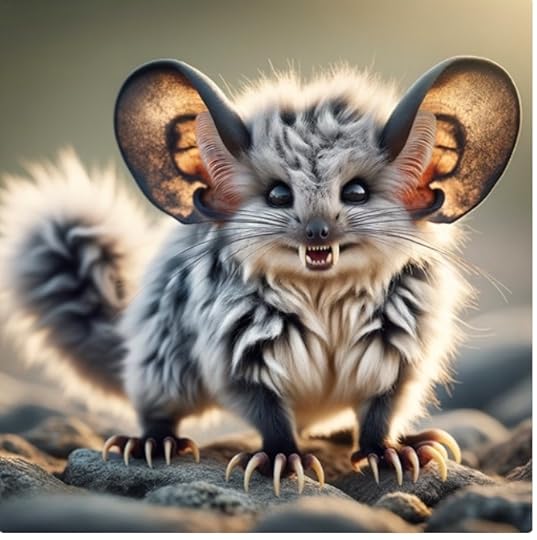Artificial Intelligence—Yes or No?
 Screenshot
ScreenshotThere is a lot of controversy these days about using artificial intelligence in your work. I’m not just talking about driving a car or reading your contact list. I’m talking about in the creative arts. There are many artists and writers who claim that artificial intelligence draws from a free association of words and visual items off the Internet. Undoubtably this is true and a lot of cases. These artist and writers contend that anyone who uses artificial intelligence to assist in their work is stealing—but is it?
This controversy over Artificial Intelligence is quite similar to the controversy that arose when photographers starting demanding a place in fine art shows, and it got worse when creatives discovered they could alter an existing photo creating digital art.
What they’re talking about is something called Intellectual Property Rights. What is that? Basically it’s your creative ideas. And there is no doubt that they belong exclusively to you. However, it has been proven over and over again that more than one person can come up with the same general idea concurrently, so which one of them is stealing from the other? If we want to prevent our Intellectual Property Rights from being stolen, instead of simply barring anybody who uses artificial intelligence, we should learn how to use it properly, and teach creative people how to use it so that they can use it effectively withoutstealing someone else’s Intellect Property Rights. If we write that into law correctly, Artificial Intelligence can be a useful tool.
While it is true, today’s Artificial Intelligence cannot create on its own without assistance from an artist or a writer, it’s going to happen sooner or later. Deal with it. No, I do not believe that Artificial Intelligence will replace human writing or human skill with a pen, pencil, or paint. One of my Facebook friends once said that she wanted an Artificial Intelligence that would do her dishes and her laundry so that she could write, not so that it could write or paint for her. That sounded good to me. Let’s face it People, Artificial Intelligence is not going to go away any more than digital art did. It’s here. I suggest everyone learn how to use it properly so they can decide for themselves how it would be helpful to them without theft.
Can this be done? I think so. We’ve all discovered over the past 20 years just how useful computers can be, and I personally see nothing wrong with using an Artificial Intelligence to spark your own creativity any more than watching a TV program or reading a book sparks ideas. Or, in the case of writers, to go in and edit a written manuscript. There is no doubt a well written manuscript, edited properly, improves it. Now, does it create it? No, absolutely not. I personally have used the Artificial Intelligence on Kindlepreneur to improve my blurbs. All this really does, is take what I’ve already written and revise it. It shortens sentences, tells you where you’re unclear in describing your book, and it’s certainly some help in correcting grammar and spelling. And the Lord knows, we can all use help with that. I don’t care how good you think you are at spelling or grammar, all of us allow colloquialisms to creep into our writing, especially when we emphasize something.
OK, I’ve been talking about the written word. Now let’s talk about the Visual Arts. If you think the controversy over using Artificial Intelligence for writing is nasty, wait till you try to talk about it in context of the Visual Arts! when people first started mentioning using Artificial Intelligence to assist in making book covers, I tried to ask a few questions. You would have thought that I was advocating selling their firstborn child when all I really wanted was some information! It’s true Visual And Graphic Arts are a fuzzier area than the written word. The construction of an imaginary world is difficult; visually many artists and writers experience (and non-artists too) difficulty translating what they see in their head onto paper. And yes, there are Artificial Intelligences out there who do draw from other people’s images on the Internet, especially if the writer has not been clear about what they’re asking for. If you are looking for an original image to visually explain your new world, DON’T use an image from someone else’s creation to describe it!
Now, one of my favorite photo resources Shutterstock, also has an Artificial Intelligence that will help you create your imaginary animals and scenery from the text you write. It was free, so I decided well. Why not try it. If nobody will answer my questions. I’ll figure it out myself. It was an interesting experience. The first thing I learned was that the little darlings (Artificial Intelligences) are stupid. If you want an original creation, then you need to refrain from using anything or object from the real world it can grab onto. For instance, the first time I used it I tried creating a creature I made up called a Powderpuff Gargoyle. It’s very small. Unfortunately, I when likened it in size to a teacup poodle. Everything I got as a result looked like a poodle dog. So the first thing I learned was do not compare the image in your mind to anything that actually exists. I did much better when I substituted the words a small mammal.
Learning to use an Artificial Intelligence is very similar to what I experienced When I was in high school; My creative writing teacher had us describe a car without using the words car or motor vehicle. We couldn’t use the word tire to describe it what fit on its wheels. Instead we had to say a round, air-filled rubber-like substance instead of wheel. So if you want an alien looking plant, don’t call it anything that resembles an earthly plant. Instead it is a green growing thing; you could say fungus, but then you might get a mushroom. if you use something like broccoli it’s, It’s gonna look like broccoli. Needless to say, the first time I tried to use this thing on Shutterstock, in trying to correct the image so I wouldn’t get a poodle, I gave it fits. It froze up, in effect, I overpowered it. If you want, say an alien looking woman, don’t call her a woman; say a female bipedal with whatever color skin you’re gonna be using. whatever her hair is going to look like, if you say hair, it’s gonna look like human hair.
No, I don’t think Artificial Intelligence is any danger to us artist or writers. The fault lies in our ability to use it and how we use it. If you give a very general description and you say your alien looks like a Klingon you’re going to get a Klingon. If you say an elf, well, there’s a lot of different descriptions out there to draw from and what you actually get back will depend on what that individual Artificial Intelligence has available for sources.
The fault lies in ourselves and our training, not in the tool.



